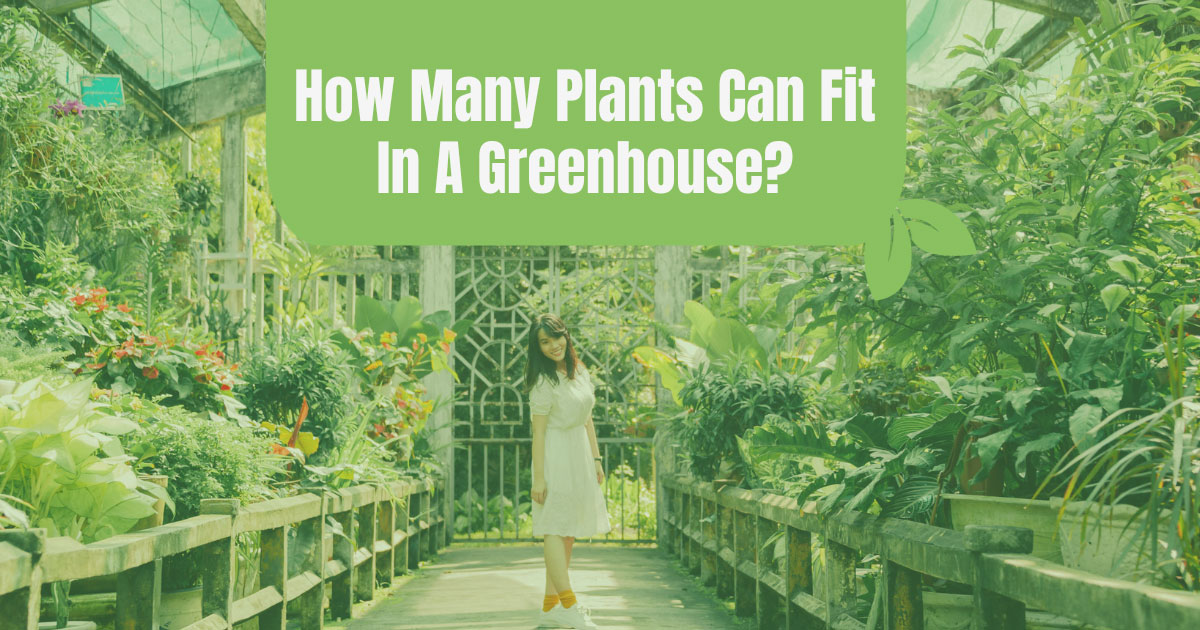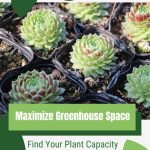
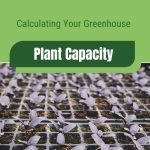
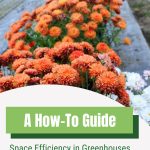
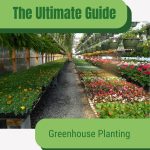
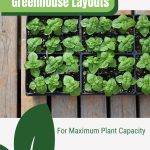
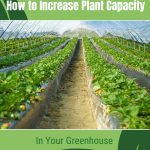
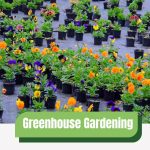

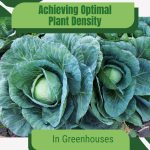
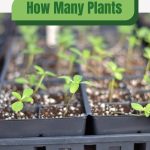
Diving into the lush world of greenhouses, one question often sprouts up among gardening enthusiasts and green-thumbed beginners alike: how many plants can fit in a greenhouse?
After years of experience, we’ve found that this isn’t just about packing in as many green friends as possible; it’s about creating a harmonious space where each plant has the opportunity to flourish. In this article, we’ll peel back the leaves and dig into the factors that influence this green puzzle.
From spatial considerations to the unique needs of different plant varieties, we’re here to guide you through optimizing your greenhouse’s potential, ensuring a thriving garden that’s as bountiful as it is beautiful.

How Many Plants Can Fit in a Greenhouse?
The short answer is: it depends. Several things could affect how many plants you can comfortably fit in your greenhouse. Let’s dive into the factors that will help you maximize your greenhouse’s potential.
Greenhouse size
The dimensions of your greenhouse dictate not just the quantity of plants you can house but also the quality of life they’ll enjoy under your care.
A larger area offers the luxury of space but brings with it the challenge of maintaining an environment where each plant can thrive without competition for light, nutrients, and air circulation.
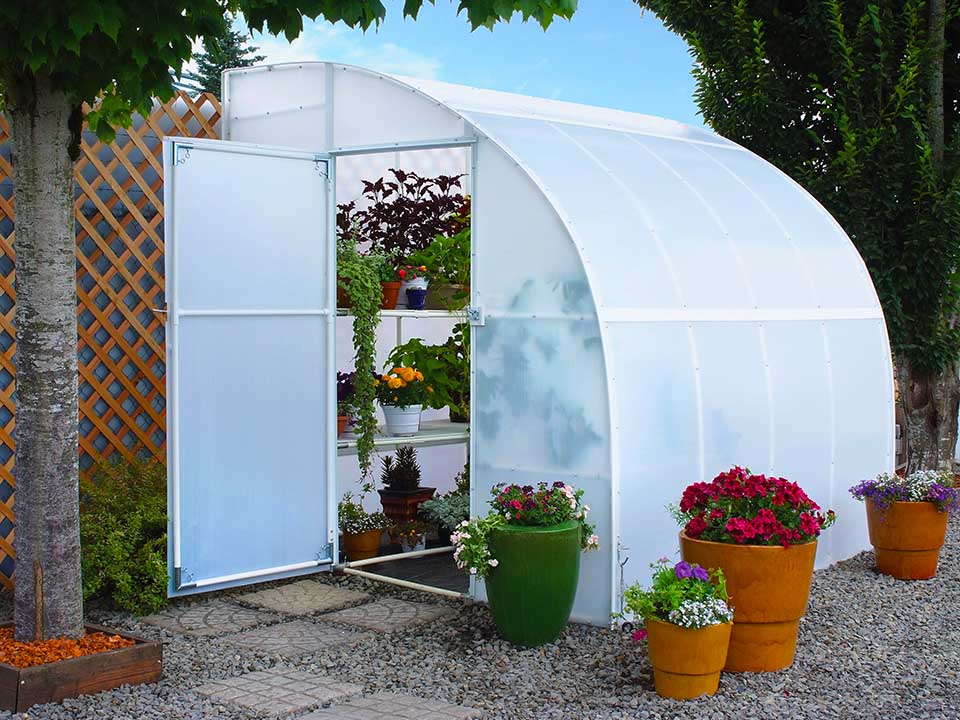
We’ve learned through years of nurturing greenhouses that the secret lies in strategic planning. This involves not only maximizing ground space but also considering vertical gardening solutions to enhance your greenhouse’s productivity without compromising plant health.
Space requirements of your plants
Each plant has a unique spacing requirement. Some, like sprawling squash vines or bushy tomatoes, demand room to stretch out, while vertical growers like beans and cucumbers reach for the sky, taking up minimal ground space.
Our hands-on trials have taught us the importance of tailoring your greenhouse layout to the specific habits and needs of the plants you choose to grow.
This means allocating enough room for each plant to grow without interference, ensuring that air can circulate freely and that pests and diseases are kept at bay.
Legal limits
Navigating the legal landscape is an essential part of greenhouse gardening, particularly when it comes to regulated plants.
According to our research, different jurisdictions have varying restrictions on the types and quantities of plants you can grow, and staying informed is your best defense against legal headaches.
Gardening experience level
Gardening is a commitment, and the size and diversity of your greenhouse garden should reflect the amount of time and energy you’re able to dedicate.
Even though there are many reasons why plants grow better in a greenhouse, a densely planted greenhouse can still become a demanding endeavor, requiring regular maintenance, monitoring, and care.
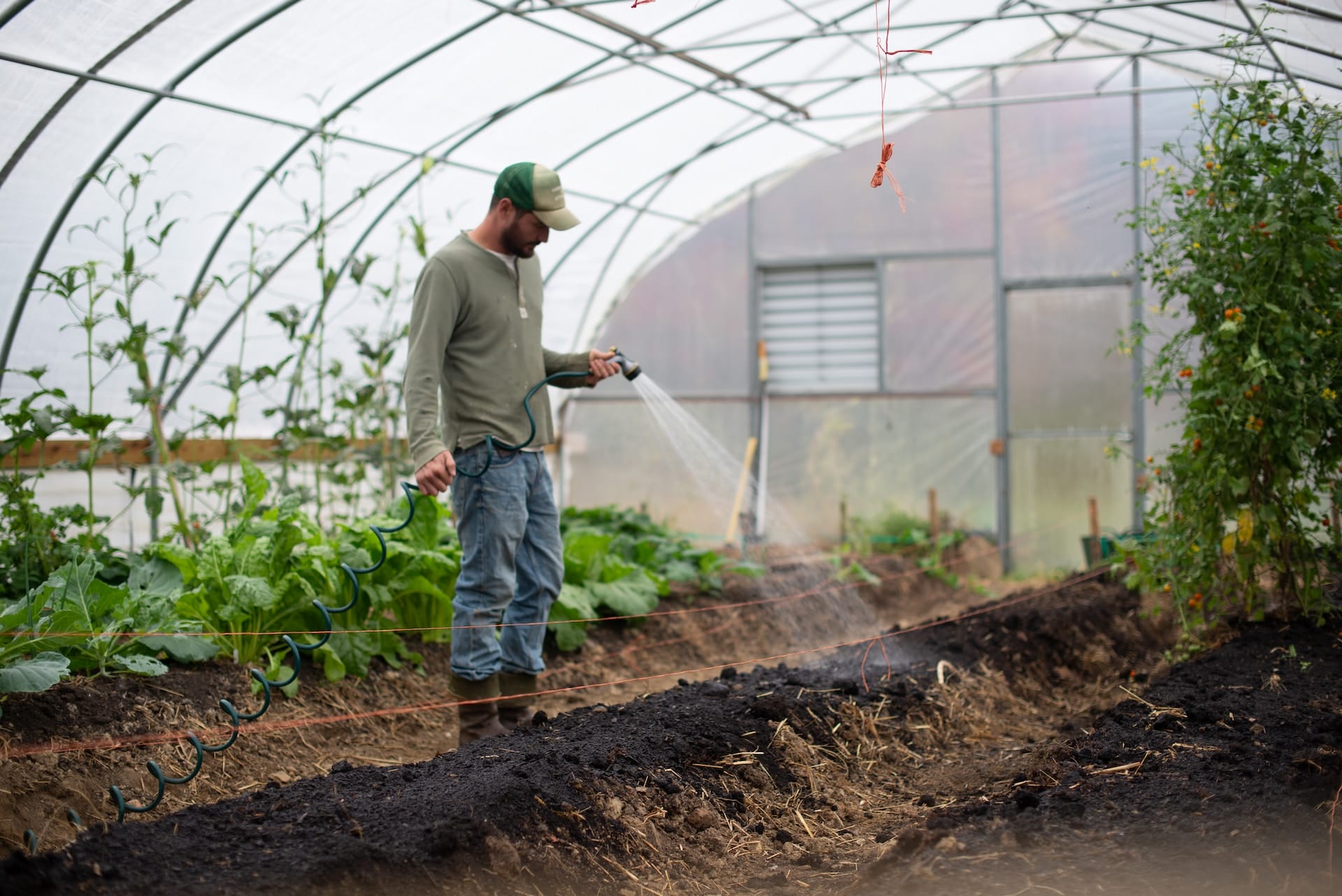
For those with limited time or beginners still honing their horticultural skills, a more modest setup might be the key to a rewarding and manageable gardening journey.
Harvest goals
Your vision for the end result plays a pivotal role in planning your greenhouse garden. If diversity is your aim, you might opt for a wide array of plants in smaller quantities, providing a rich tapestry of colors, textures, and flavors.
On the other hand, if you’re aiming for a substantial yield of a few favorites, like a hefty harvest of heirloom tomatoes or a steady supply of fresh herbs, your space planning will need to accommodate these specific goals, perhaps dedicating larger areas to these key players in your garden.
Lighting
Light is the lifeblood of your greenhouse, and its availability and distribution are key factors in determining how densely you can plant. Natural sunlight is the gold standard, but in its absence or during shorter days, supplemental lighting can bridge the gap.
But, strictly speaking, do you need grow lights in a greenhouse? While you don’t necessarily, our exploration into the world of grow lights has shown that with the right setup, you can extend the growing season and increase your plant density without sacrificing health and productivity.
The trick is to ensure that each plant receives the light it needs to photosynthesize effectively, whether through careful placement, the use of reflective materials, or a well-designed artificial lighting system.
Watering systems
Efficient watering systems are the backbone of a successful greenhouse, directly influencing how many plants you can sustainably manage. Overcrowding can lead to uneven watering, with some plants getting too much and others too little.

By implementing a drip irrigation system, you can deliver water directly to the base of each plant, reducing waste and ensuring that every plant receives its necessary hydration.
This targeted approach is especially important for a greenhouse in summer because it not only conserves water but also allows for a more compact planting arrangement by minimizing the issues associated with overhead watering, such as leaf wetness and the spread of diseases.
Soil requirements
The foundation of every thriving greenhouse is its soil and the nutritional plan in place for plant sustenance. Different plants have varied nutritional needs and soil preferences, which can significantly impact how you organize your greenhouse space.
For instance, heavy feeders like tomatoes and peppers might require more space for root growth and additional nutrient inputs, whereas herbs like basil and cilantro are less demanding.
Spacing Guidelines
Navigating the green maze of your greenhouse begins with understanding how to effectively utilize its space. Let’s break down the guidelines based on the size of your greenhouse:
Small greenhouses (up to 50 sq ft)
Small greenhouses are cozy spaces where every inch counts. Using a mini greenhouse is a perfect starting point for beginners or those with modest outdoor space. In such an intimate setting, you can expect to house 20-30 small to medium-sized plants.
The key here is to allocate about 1-2 square feet per plant. This spacing ensures that each plant has enough room to breathe and grow without competing fiercely for light and nutrients. It’s about creating a harmonious micro-environment where your greenery can flourish side by side.
Medium greenhouses (50-150 sq ft)
Stepping up in size, medium greenhouses offer a broader canvas for your horticultural aspirations. They are well-suited for gardeners looking to expand their botanical repertoire or increase their yield.
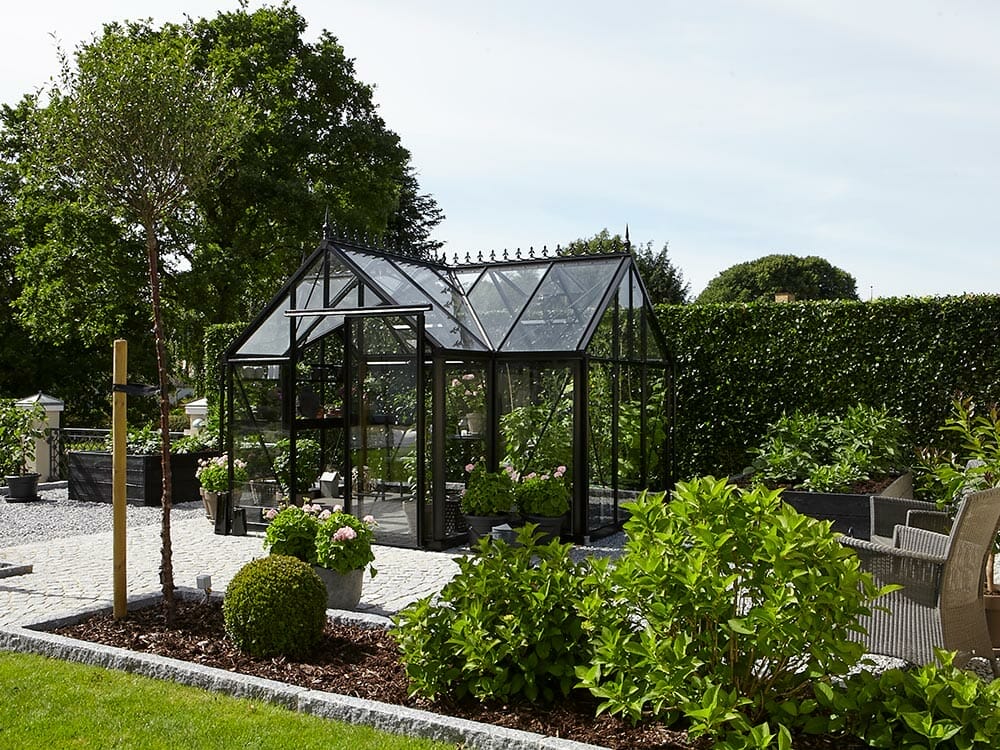
In this more spacious environment, you can accommodate 50-100 plants by employing strategic planning and innovative gardening techniques. Vertical gardening, for instance, can be a game-changer, allowing you to maximize your greenhouse’s vertical space.
Trellises, hanging baskets, and shelves can all be used to create multiple levels of greenery, effectively doubling or even tripling your planting area.
Large greenhouses (150+ sq ft)
For those who have transcended the hobbyist level and entered the realm of true plant mastery, large greenhouses offer an expansive playground for botanical experimentation. With 150 square feet or more at your disposal, the possibilities are nearly endless.
However, the principle of individual space for each plant remains paramount. Even in this vast space, it’s crucial to ensure that each plant has enough room to reach its full potential. This might mean larger buffer zones around each plant, especially for those that grow wide or tall.
Large greenhouses also allow for more intricate garden designs, including dedicated zones for different plant types, walkways for easy access, and even seating areas for you to enjoy the green oasis you’ve created.
How Many Plants Can Fit in a Greenhouse? (FAQs)
Can I mix edible plants with ornamentals in my greenhouse?
Absolutely! Mixing edible plants with ornamentals can create a diverse and aesthetically pleasing greenhouse environment.
This approach not only maximizes your space but also promotes a healthy ecosystem by attracting beneficial insects. Just ensure that each plant type’s specific needs, such as light, water, and soil conditions, are compatible and well-managed.
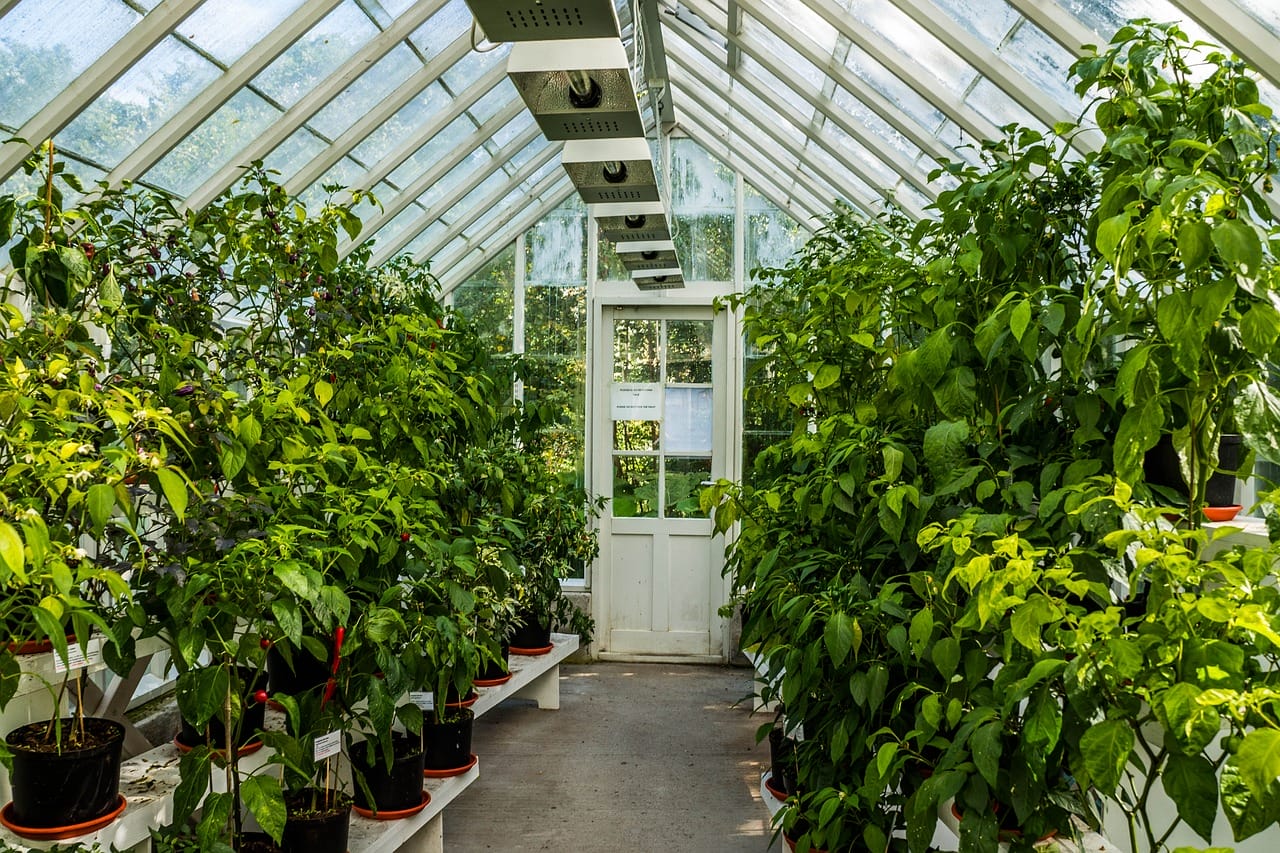
How often should I rotate crops in my greenhouse?
Crop rotation is a vital practice to maintain soil health and prevent pest and disease buildup. In a greenhouse setting, it’s advisable to rotate crops at least once a year, ideally changing plant families to different areas.
This strategy helps in breaking the life cycles of pests and diseases and managing nutrient depletion in the soil.
Is it necessary to have a pollination plan for greenhouse gardening?
Yes, pollination is crucial for the fruiting of many plants, and in the enclosed environment of a greenhouse, natural pollinators might be scarce.
Introducing bumblebees or manually pollinating plants by hand are effective strategies to ensure your flowering plants can set fruit. For some crops, like tomatoes and peppers, gently shaking the plants can also aid in self-pollination.

